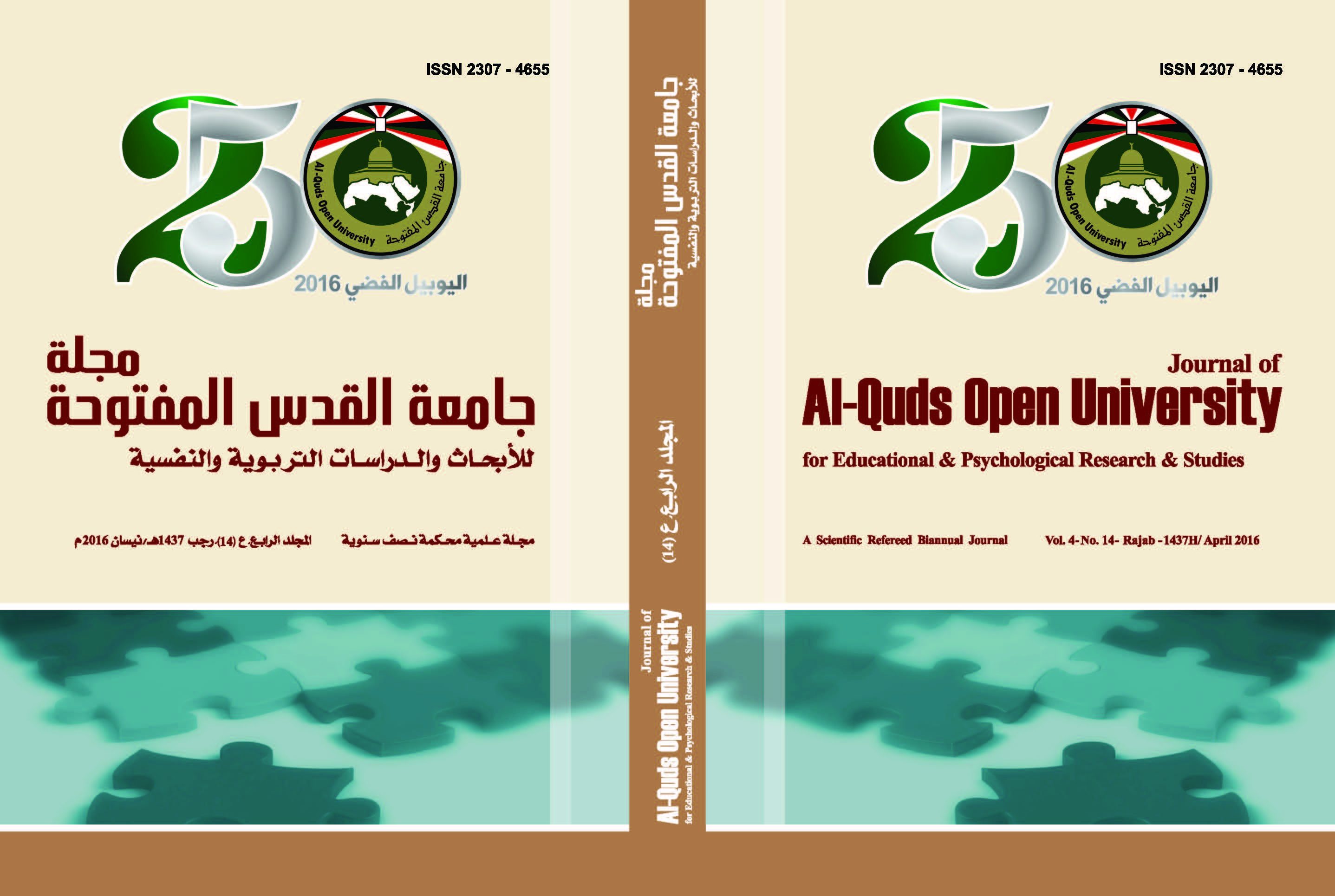The Image of Children Presented in the Palestinian Curriculum of Arabic Language from First to Fourth Grades
Keywords:
Image of Children, Palestinian Curriculum, Arabic Language, 1st to 4th GradesAbstract
The aim of this study is to depict the image of children represented in the
Palestinian curriculum of Arabic language from the first to fourth grades.
The content analysis approach was utilized to answer the five questions
conducted here in the study. The results indicated that children were referred
to and mentioned within some lessons. Arabic language curriculum included
the social, emotional, theological, ethical, cognitive and self- development.
It valued the role of social development, which was repeated 31 times
with a percentage of 60%. Moreover, the emotional aspect was repeated
9 times with a percentage of 18%, indicating the importance of the Arabic
language in stimulating children's emotions, sentiments and reactions. This
also displays the importance of respecting and valuing children's emotions
and sentiments and helping them to profoundly understanding themselves.
Notably, with a repetition of 7 times and a percentage of 14, the theological
and ethical aspect did not obtain the adequate percentage; a shortage
was depicted at the cognitive level, which was only noted 4 times with a
percentage of 8%.
The curriculum lessons displayed the children as neat, polite,
collaborative, initiator and tolerant indicating establishment of a Palestinian
cooperation- based civil society but discarded the representations of children
as researcher, explorer, studious, creative and patriot. The results revealed
that some drawings depict children positively and value the importance of
the positive relation between adults and children. The representations of
children as researchers and explorers were absented. Thus, there is a need
to reconsider lessons drawings and their assessments according to children
developmental needs. Palestinian curriculum of Arabic language must be
restructured to recognize the handicapped students at class. The curricula
exhibited the roles and chores designated to children within the context of
school, house, farm, art works and the nearby periphery. The study concluded
with practical recommendations to develop the curriculum.
Downloads
Published
How to Cite
Issue
Section
License
- The editorial board confirms its commitment to the intellectual property rights
- Researchers also have to commit to the intellectual property rights.
- The research copyrights and publication are owned by the Journal once the researcher is notified about the approval of the paper. The scientific materials published or approved for publishing in the Journal should not be republished unless a written acknowledgment is obtained by the Deanship of Scientific Research.
- Research papers should not be published or republished unless a written acknowledgement is obtained from the Deanship of Scientific Research.
- The researcher has the right to accredit the research to himself, and to place his name on all the copies, editions and volumes published.
- The author has the right to request the accreditation of the published papers to himself.







2.png)






_2.png)

